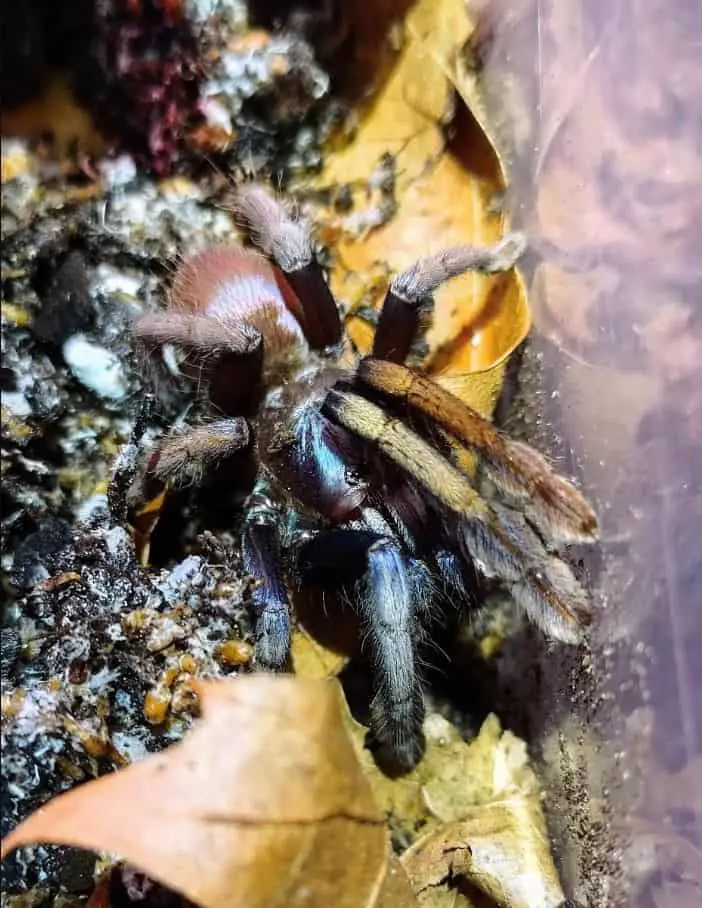Old World tarantulas are species that are native to what is called the “Old World”, a term that’s used to describe Europe, Africa, and Asia.
The species that inhabit these continents are quite a bit different from their New World counterparts, which inhabit North and South America. The primary difference between them is that Old World tarantulas are typically more venomous, faster, and lack urticating hairs. In addition, they’re also often less docile.
Because of this, not many of these species are recommended for beginners and are often better suited for intermediate or advanced tarantula owners.
If you’re up for the challenge and want an Old World species as your next pet, it might be hard to choose one. After all, there are hundreds of species in existence. For that reason, we’ve compiled this list of the top 10 species to consider.
The top 10 Old World Tarantulas
1. Poecilotheria Metallica
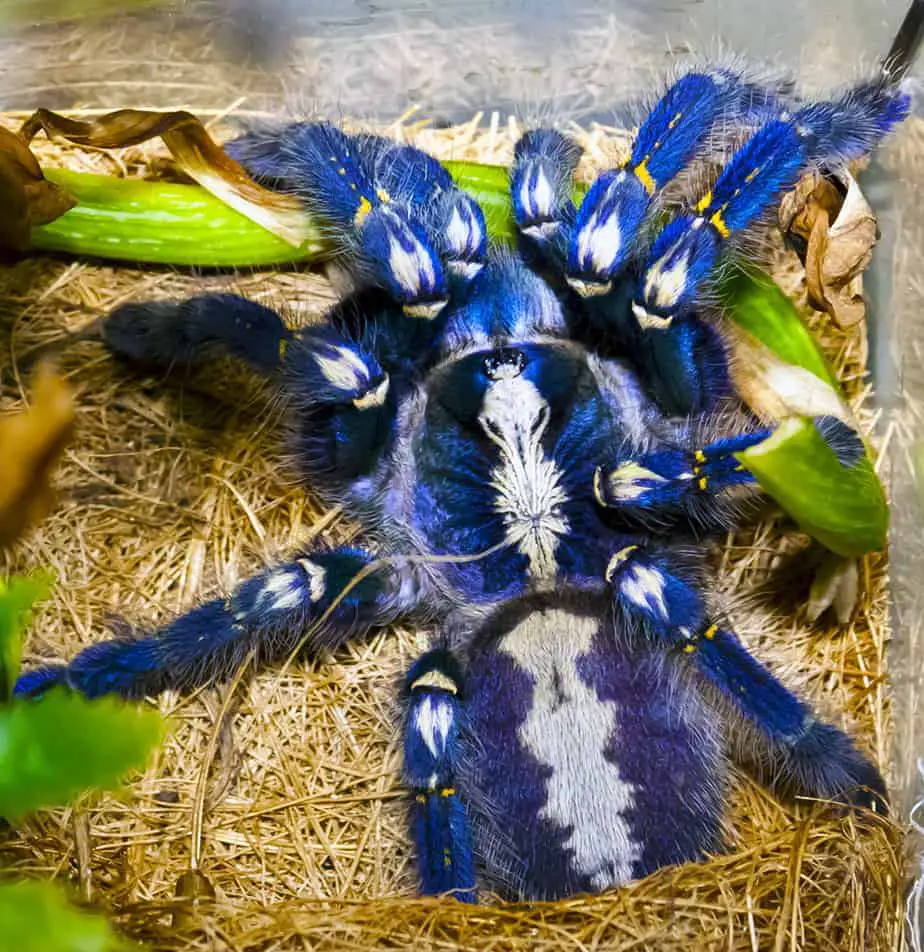
| Common name | Gooty Sapphire Tarantula |
| Type | Arboreal |
| Leg span | 6 inches |
| Lifespan | Females 12 years / Males 4 years |
| Experience level | Advanced |
The Poecilotheria Metallica, better known as the Gooty Sapphire Tarantula, is one of the most beautiful tarantula species in the world. They’re famed for their stunning metallic blue color along with white and yellow spots.
They have powerful venom and are not recommended for beginners, but they’re definitely a beautiful species that is the crown jewel of many collections.
2. Poecilotheria Regalis
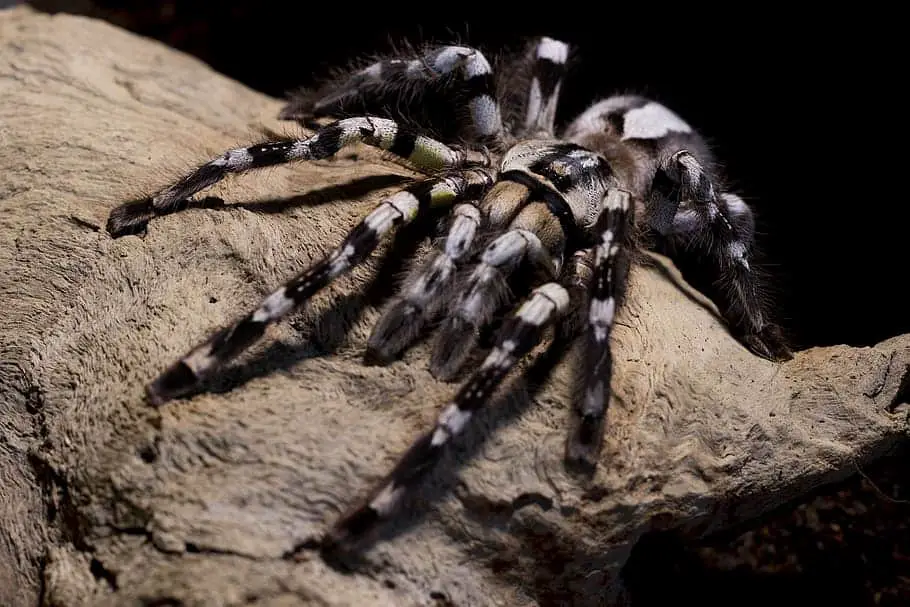
| Common name | Indian Ornamental Tarantula |
| Type | Arboreal |
| Leg span | 7 to 7.5 inches |
| Lifespan | Females 11 to 15 years / Males 3 years |
| Experience level | Advanced |
The Poecilotheria Regalis, commonly known as the Indian Ornamental Tarantula is an Arboreal species that’s native to India. They’re known for their large size and unique colors and patterns.
They have a black and white body with yellow spots on the bottom of the legs.
They’re not very skittish and have a tendency to sit out in the open, which makes them a great show spider.
Be careful though, because they have massive fangs which they’re not afraid to use.
3. Pterinochilus Murinus
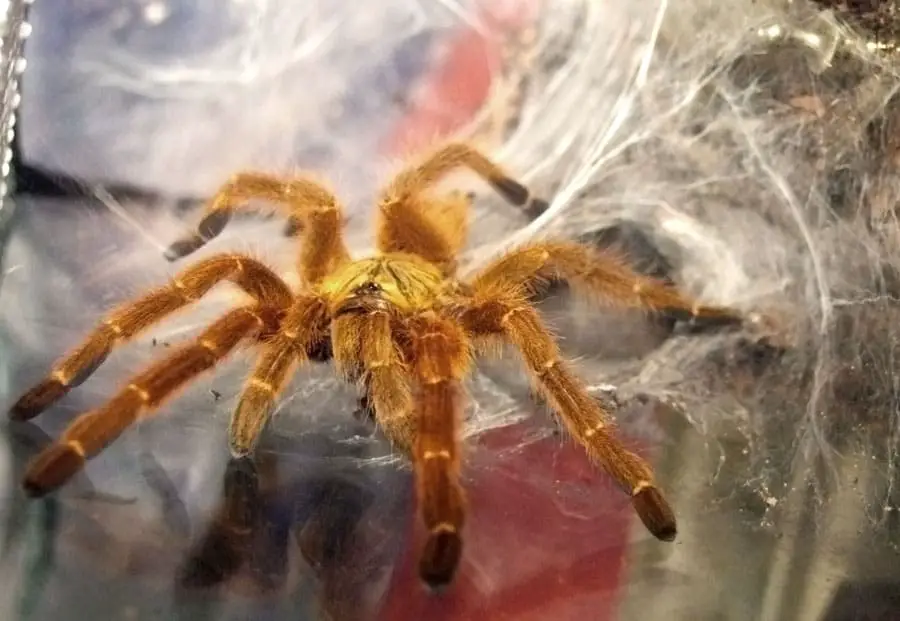
| Common name | Orange Baboon Tarantula |
| Type | Terrestrial |
| Leg span | 4 to 6 inches |
| Lifespan | Females 14 years / Males 4 years |
| Experience level | Advanced |
The Pterinochilus Murinus’s common name is the Orange Baboon Tarantula. In my opinion, this is the most beautiful of all the baboon spiders. It has a unique orange color that definitely makes it stand out.
This species comes in a number of different variants, but they’re most commonly a solid orange color.
These spiders are not for the faint of heart. They’re incredibly quick and rather defensive. However, if you can handle them, it’s hard to find a tarantula that’s more unique than this one.
4. Birupes simoroxigorum
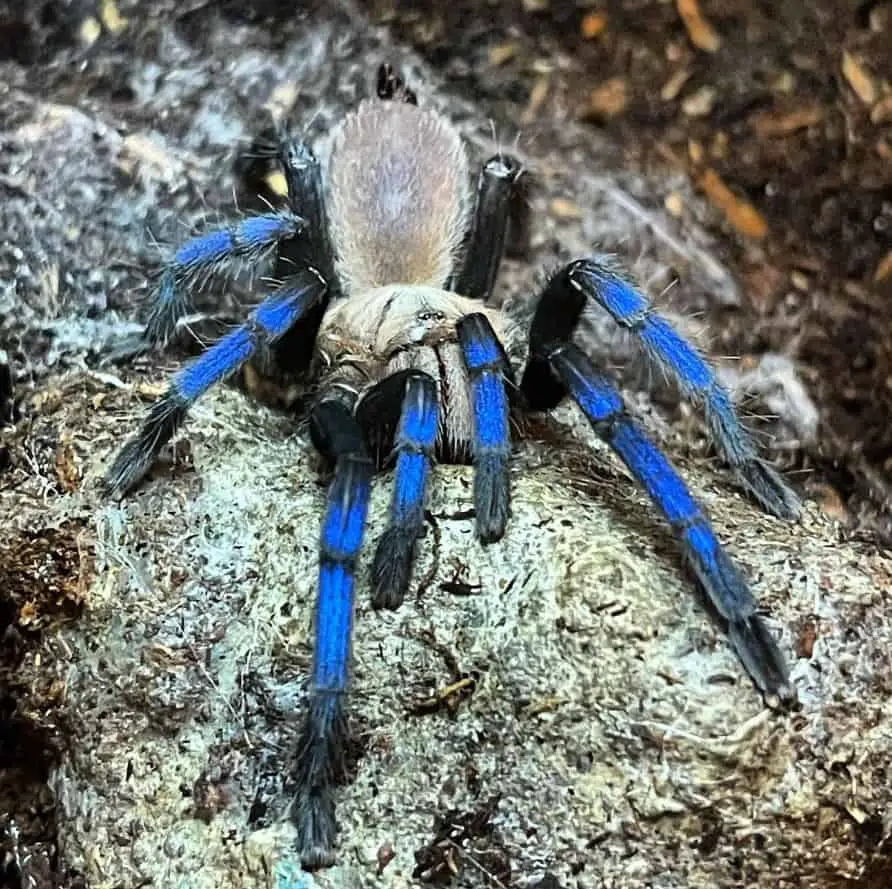
| Common name | Neon Blue Leg Tarantula |
| Type | Terrestrial |
| Leg span | 5 inches |
| Lifespan | Unknown |
| Experience level | Intermediate |
The Birupes simoroxigorum, or Neon Blue Leg Tarantula, is a species that was discovered very recently. As a result, many things are still unknown about them, such as their lifespan.
It’s a very colorful spider that’s attracted a lot of attention because of its Neon Blue legs.
One thing that’s important to note about this species is that it was originally extracted from Borneo without permission, and there are still poachers who smuggle this species.
If you want to add this interesting spider to your collection only do so if you can buy them captive-bred so that you do not support poachers.
5. Haplopelma Minax
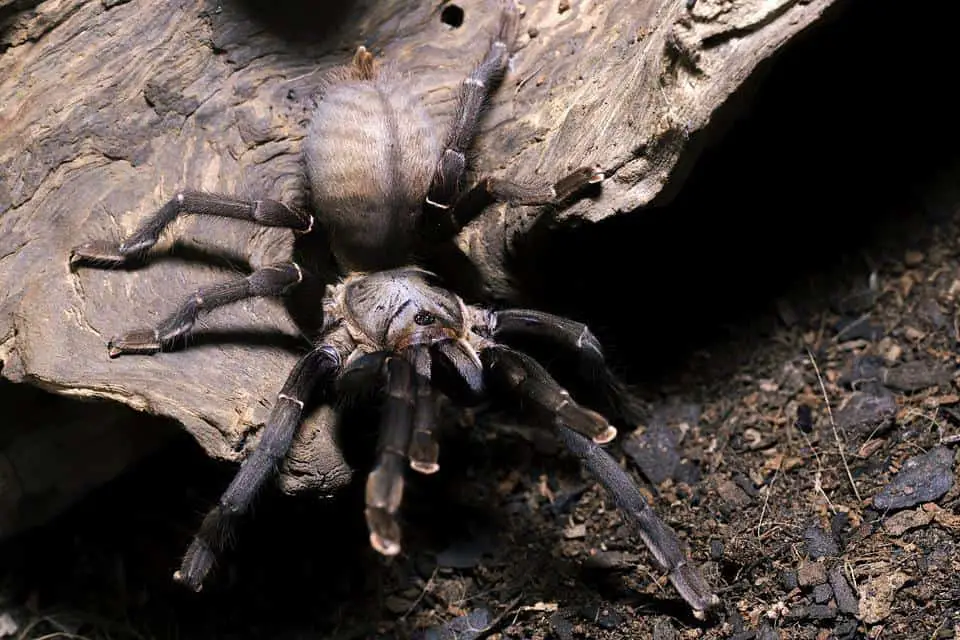
| Common name | Thailand Black Tarantula |
| Type | Terrestrial |
| Leg span | 5 to 6 inches |
| Lifespan | Females 11 to 13 years / Males 2 to 4 years |
| Experience level | Advanced |
The Haplopelma Minax, or Thailand Black Tarantula, is a terrestrial burrowing species that is native to Thailand. If you’re looking for a jet-black tarantula, this one might be right up your alley.
Do note though that they will spend a lot of time in their burrow, which leads to them often being called a “pet hole” because that’s all you’ll often see.
Nevertheless, when they do come out, they’re quite interesting to behold, especially when feeding. They’re ferocious eaters that take down prey with a fervor that’s not often seen.
They’re not suitable for beginners due to their quick speed, potent venom, and defensive nature, but for expert hobbyists, they’re definitely worthy of consideration.
6. Pelinobius Muticus
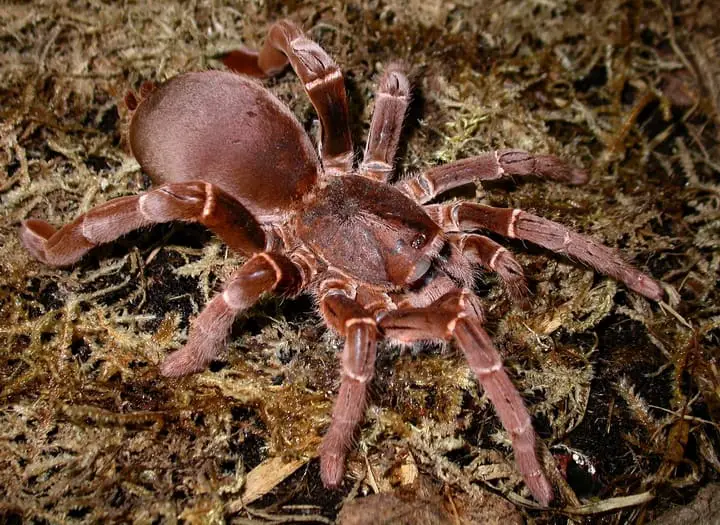
| Common name | King Baboon Tarantula |
| Type | Terrestrial |
| Leg span | 8 inches |
| Lifespan | Females 20 to 25 years / Males 10 to 15 years |
| Experience level | Advanced |
The Pelinobius Muticus, commonly known as the King Baboon Tarantula, is a terrestrial burrow native to East Africa. It’s known for its large size and defensive nature.
They’re definitely one of the harder species to care for, but they’re quite popular due to their large size. They’re not the most colorful species but are unique in their own right with their copper coloration.
They have some of the most painful venom of all the species, which means that you should be extremely cautious when interacting with them.
7. Poecilotheria ornata
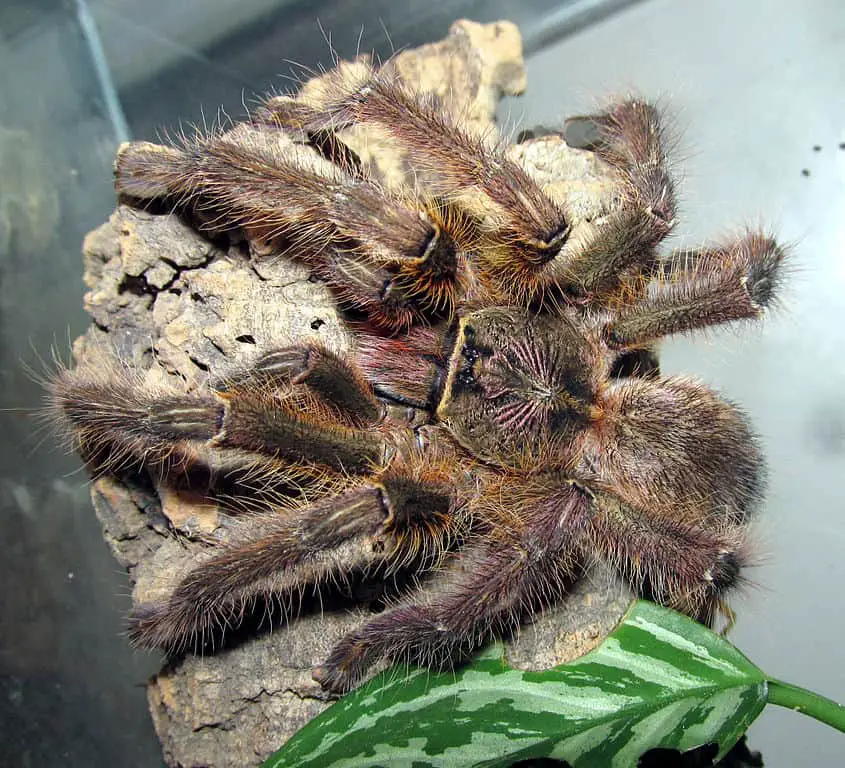
| Common name | Fringed Ornamental Tarantula |
| Type | Arboreal |
| Leg span | 9.8 inches |
| Lifespan | Females 12 years / Males 3 years |
| Experience level | Intermediate |
The Poecilotheria Ornata, more often known as the Fringed Ornamental Tarantula, is a massive species native to Sri Lanka.
They’re the second only to the P. Rufilata for the title of largest Old World spider and can reach a massive 9.8 inches in size. Don’t let their large size fool you though, they’re deceptively quick and have potent venom to match.
Though tough to care for, they exhibit beautiful colorful patterns on their long legs and abdomen, adorned with colorful setae. They tend to be quite willing to sit out in the open, which, combined with their large size, makes them excellent display spiders.
8. Chilobrachys sp.
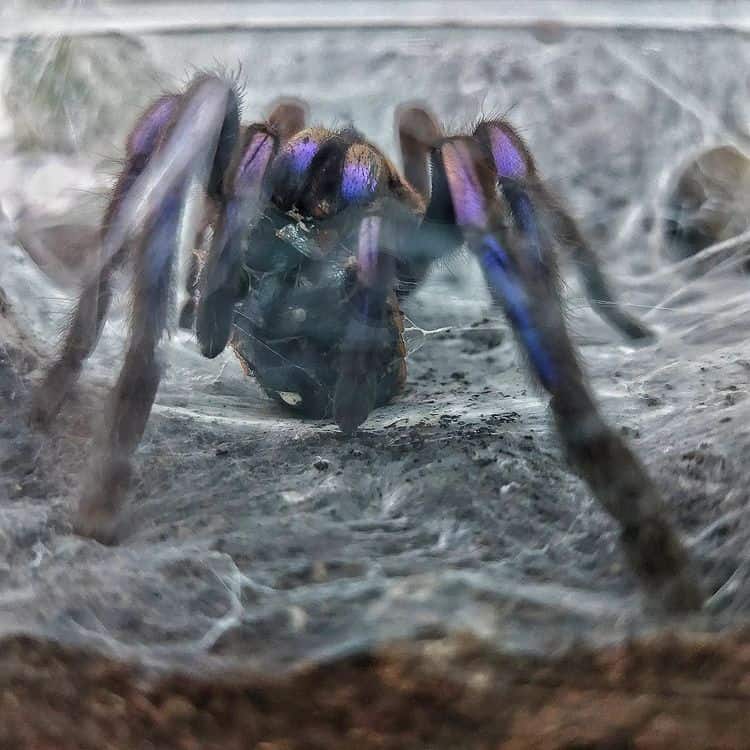
| Common name | Electric Blue Tarantula |
| Type | Terrestrial |
| Leg span | 5 to 6 inches |
| Lifespan | Females 10 to 12 years / Males 3 years |
| Experience level | Intermediate/advanced |
The Chiloobrachys sp. or Electric Blue Tarantula is a beautiful species famed for its electric blue coloration on its legs.
While beautiful, you do need some experience to be able to care for them properly. They’re defensive in nature and do have quite a potent venom.
They’re a semi-fossorial species, which means that they will spend quite a bit of time in their burrows. This is disappointing for some people because it gives them less time to admire their stunning blue legs.
9. Chilobrachys fimbriatus
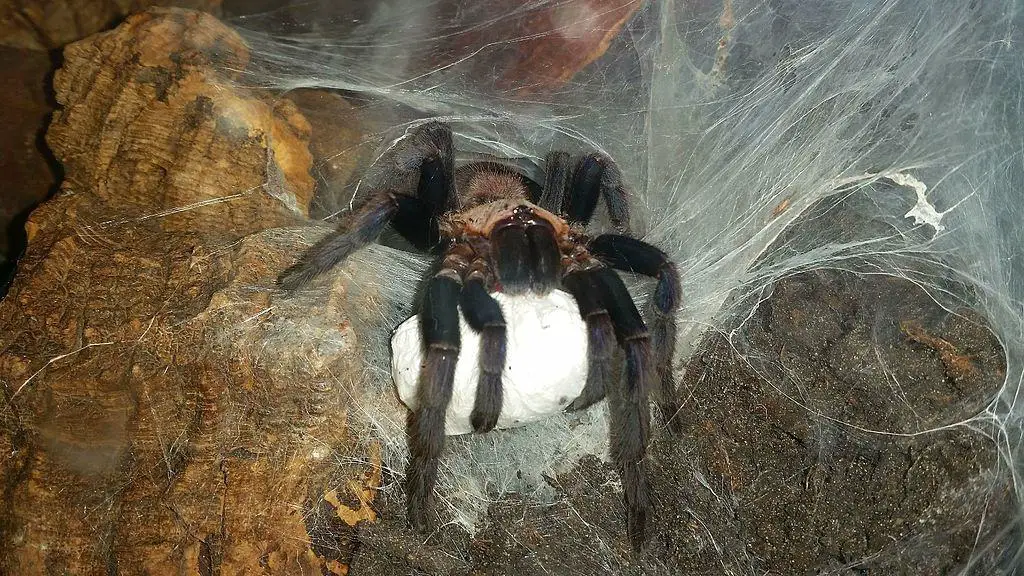
| Common name | Indian Violet Tarantula |
| Type | Terrestrial |
| Leg span | 6 inches |
| Lifespan | Females 20 years / Males 2 to 4 years |
| Experience level | Intermediate/advanced |
The Indian Violet Tarantula is a gorgeous species from the Chilobrachys genus. As their common name suggests, they’re native to India and are known for their violet coloration.
They’re also known as heavy webbers and will create intriguing web systems that are quite interesting to see.
Their temperament can be described as nervous, fast, and defensive. This, combined with their venom means that they’re best suited for intermediate to advanced hobbyists.
10. Haploclastus devamatha
| Common name | Indian Rainbow Tarantula |
| Type | Terrestrial |
| Leg span | 4.3 inches |
| Lifespan | Females 12 to 15 years / Males 2 to 4 years |
| Experience level | Intermediate/advanced |
The Haploclastus Devamatha, or Indian Rainbow Tarantula, is a terrestrial burrowing species native to India. They’re highly desired for their prismatic color display which showcases many different colors.
They come in a pink and a blue version and are quite small, topping out at a size of only 4.3 inches.
These spiders are quite expensive, but their colorful appearance justifies the price.
Final words
So, there you have it, 10 beautiful Old World tarantula species to consider getting.
Old World species might be more difficult to care for due to their more defensive nature and much stronger venom, but the payoff can definitely be worth it. There are some true hidden beauties in this category that don’t get as much attention as they deserve.
- How Long Do American Eskimo Dogs Live? Important Factors and Care Tips - September 29, 2023
- Do American Bulldogs Need Grooming? Essential Tips and Care Guidelines - September 29, 2023
- Do Bengal Cats Enjoy Playing? Essential Tips for Keeping Them Active - September 29, 2023
